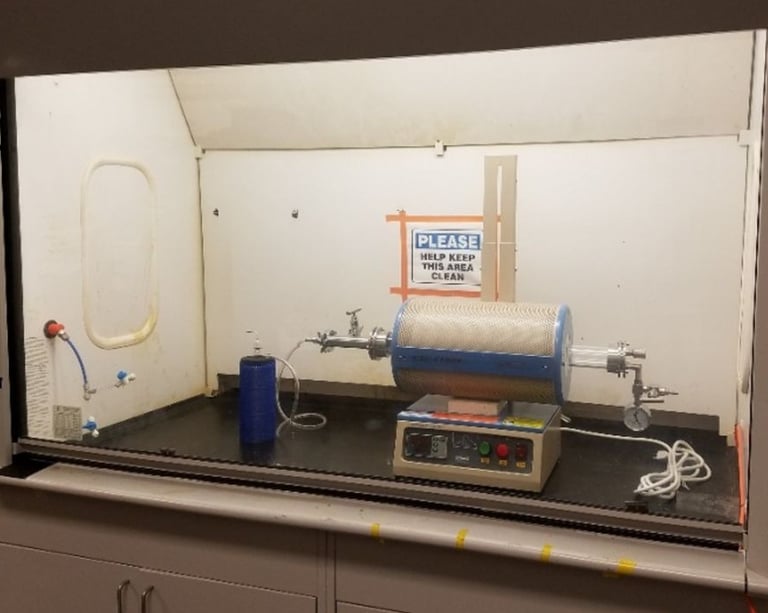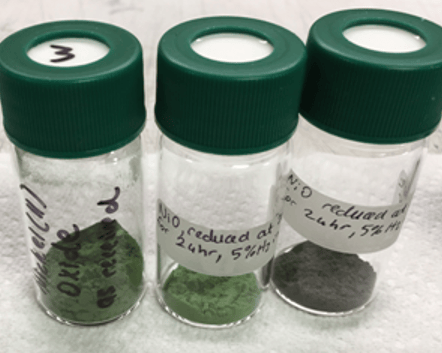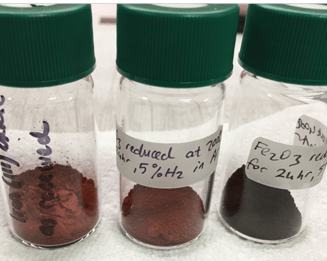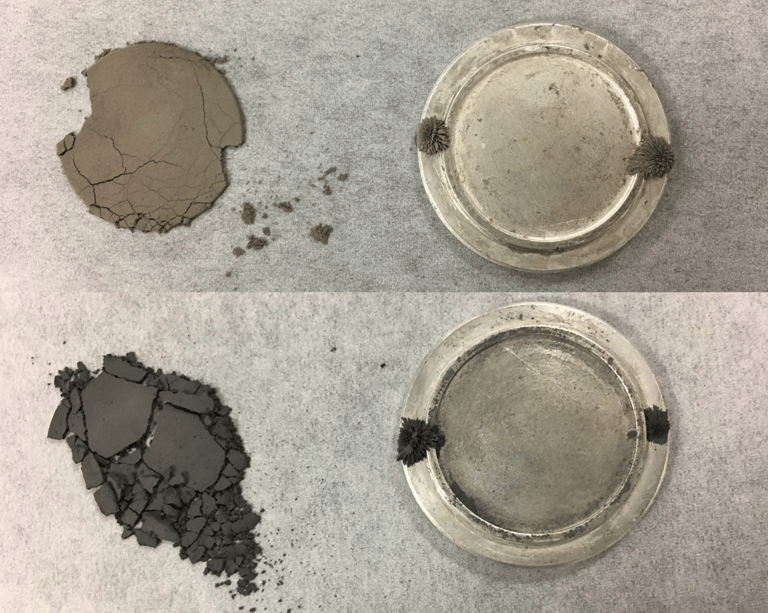REGOLITH
Sustained presence beyond Earth requires a way to turn regolith into usable metal. This project focused on developing a closed-loop, low-temperature process to extract iron and nickel from regolith simulant and convert them into powders suitable for Additive Manufacturing. Oxides were reduced to metals, volatilized, separated, and recondensed—no consumables required, with oxygen generated as a byproduct. Phase I demonstrated key steps: chemical reduction, metal recovery, and powder formation.
Metal Production Away from Earth
Year: 2017
Customer: NASA
The Puzzle
What was the challenge? Why was it worth solving?
The hardest part of space travel isn't distance—it's escaping Earth. The energy cost to reach low Earth orbit exceeds that of continuing to the Moon or Mars. If we aim to build anything meaningful beyond our atmosphere, we must stop dragging raw materials with us. Instead, we must learn to use what’s already out there.
This challenge falls under the banner of in situ resource utilization (ISRU)—the art and science of turning space rocks into spacecraft parts. Iron and nickel are abundant on the Moon, Mars, and asteroids, but mostly in oxidized forms unsuitable for Additive Manufacturing (AM). To be useful, these metals must be extracted, purified, and formed into powders that meet AM requirements.
NASA's roadmap makes this need explicit: materials must be sourced and processed off-world using efficient, closed-loop methods that conserve reagents and avoid consumables. Any oxygen produced along the way is a welcome bonus. The puzzle, then, is how to take oxidized regolith and—without hauling tanks of chemicals from Earth—turn it into clean, printable metal.
The Game Plan
How the problem was approached — strategy, tools, and intent.
The project aimed to establish a four-step pathway for producing iron and nickel powders from extraterrestrial regolith, ready for use in Additive Manufacturing systems. Each step was designed to operate in a closed loop, with full reagent recovery and minimal external inputs:
Step 1: Size Reduction
Native material was to be ground to increase surface area and improve reactivity with gas-phase reductants. While this is a mature technology and not the focus of Phase I, it sets the throughput scale for downstream processes.Step 2: Chemical Reduction
Iron and nickel oxides in the regolith simulant were targeted for reduction to their zero-valent (metallic) forms using recyclable gas-phase reactants. Efficiency and completeness of reduction were key metrics.Step 3: Volatile Conversion & Separation
Reduced metals were to be converted to volatile intermediates, enabling clean separation from residual mineral matrix. This step provides in-process purification while preserving reagent cycles.Step 4: Metal Powder Recovery
Volatile compounds were decomposed to yield fine metal powders. Particle size and purity were controlled to ensure direct compatibility with AM feedstock requirements.
Throughout, the process emphasized no consumables, oxygen generation as a byproduct, and delivery of ready-to-use metal powders. The goal was not just metal recovery—but usable, printable materials with zero logistical tail.
What Actually Happened
The results. The breakthroughs. Maybe even a few surprises.
1. Reduction of Metal Oxides (NiO and Fe₂O₃):
At 400°C, NiO achieved >97% conversion to Ni, while Fe₂O₃ showed ~65% conversion. Incomplete iron reduction was due to surface reoxidation upon exposure to air, evidenced by color change and pyrophoric behavior.
Controlled oxygen diffusion post-reduction at 400°C prevented pyrophoric reoxidation of Fe and preserved the reduced state. However, percent conversion did not significantly improve, confirming oxidation was largely surface-limited.
At 600°C, both NiO and Fe₂O₃ achieved near-complete reduction (~100% for Ni, ~98% for Fe), with no pyrophoric behavior. Controlled oxygen diffusion stabilized the reduced products. XRD confirmed significant decrease in oxide peaks and emergence of metallic peaks.
2. Reduction of Martian Regolith Simulant (MMS-2):
Reduction at 600°C for 24 hours with controlled oxygen diffusion produced black, stable product.
Weight loss indicated 176.2% "conversion" due to vaporization of Mg and sulfate species in addition to metal oxide reduction.
XRD and particle analysis underway; visible results and weight change suggest successful multi-component reduction.
3. Particle Size Analysis:
Reduction of NiO caused slight increase in particle size with increasing temperature; all specimens remained unimodal.
Fe₂O₃ reductions resulted in bimodal distributions with coarser particles forming above 400°C.
Controlled oxygen diffusion slightly decreased iron particle sizes, likely due to surface stabilization.
Reduced specimens’ shape assumption (spherical vs. irregular) had minimal effect on particle size metrics, unlike pristine powders.
Show & Tell
Visuals, prints, textures, data — what it looked like in the real world.




Custom-built tube furnace system with precise H₂/Ar flow control used to thermochemically reduce metal oxides—designed to simulate lunar ISRU conditions.
NiO powder (green) undergoes visible color change to metallic Ni (gray) with increasing temperature - clear evidence of progressive reduction.




Fe₂O₃ (red) is reduced to Fe (black) as temperature increases, consistent with known thermodynamics -simple, visual confirmation of effective reduction.
Reduced Ni and Fe powders show strong attraction to a magnet - clear indication of metallic state and successful oxide-to-metal conversion.
Lessons from the Lab
What worked. What didn’t. What was learned along the way.
Temperature sensitivity is critical: Reduction of metal oxides like NiO and Fe₂O₃ occurs at surprisingly low temperatures (~200–400°C), highlighting the feasibility of low-energy ISRU processes.
Visual cues are powerful diagnostics: Simple color changes offered rapid, intuitive confirmation of reduction progress—proving valuable for low-resource field assessments.
Magnetism is a reliable reduction indicator: Post-reduction magnetic response provided immediate and non-invasive validation of metallic phase formation.
System simplicity matters: The low-cost, scalable setup proved robust for simulating lunar reduction scenarios, underscoring the value of straightforward, reproducible hardware for ISRU prototyping.
Material purity and morphology affect outcomes: Variations in initial oxide morphology and purity influenced reduction kinetics and completeness, emphasizing the importance of starting material control.